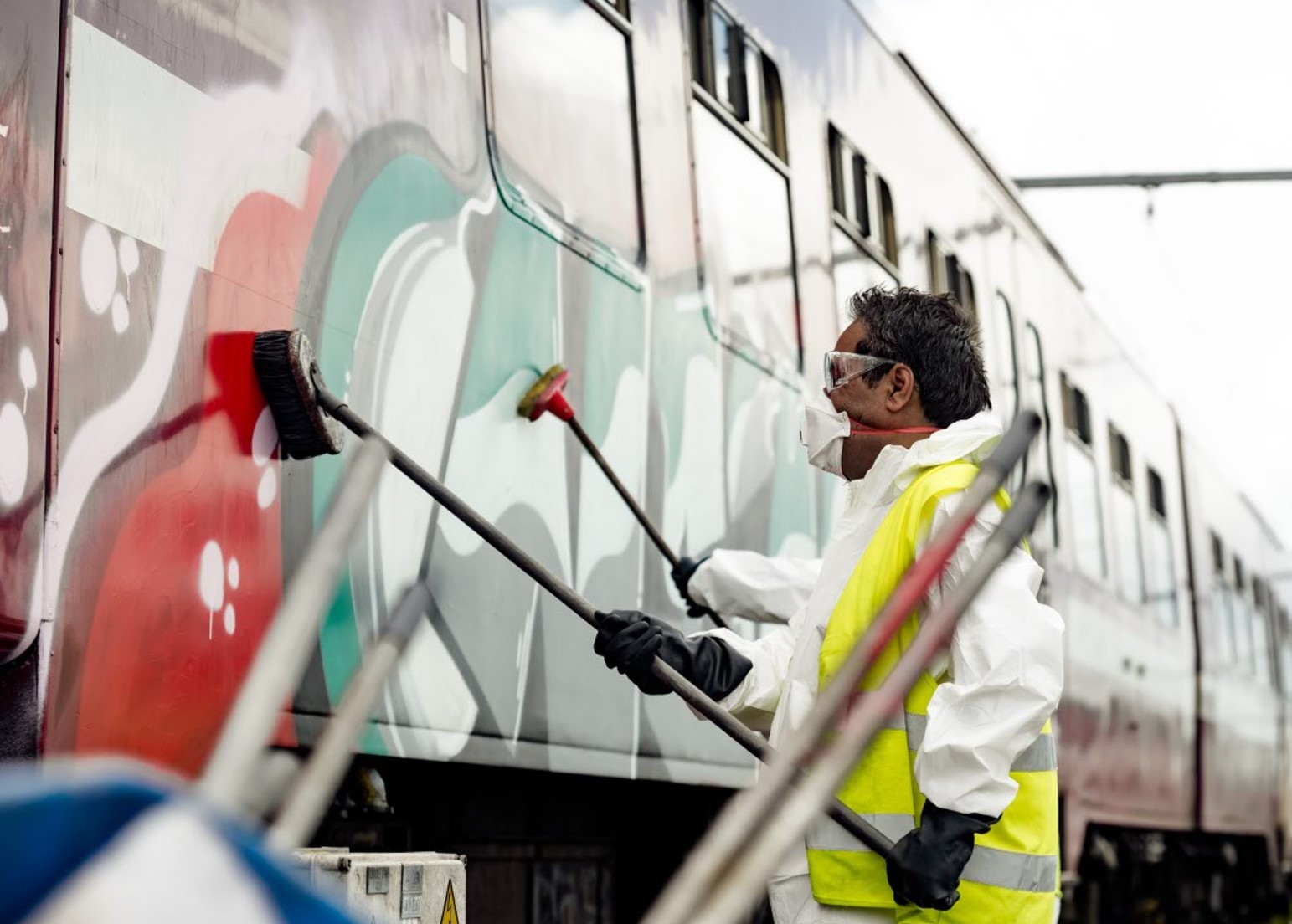Graffiti removal from trains not only ensures a clean appearance, it is also important for the safety of train staff and passengers. For the graffiti removal, our division Mobility Masters follows 6 efficient steps.
1. Safety first during graffiti removal
Before our mobility masters start their work, they ensure a safe working environment. In the steering station of the train, they place a safety card clearly stating that graffiti will be removed from the train. One of the main reasons for this is that the train staff definitely do not connect the high-voltage cables to the train. The train should always be disconnected so that there is no connection with electricity. In fact, the live cables carry 3,000 volts. We also provide stop signs 10 to 15 metres in front of and behind the train so that the train can definitely not leave.
2. Correct use of personal protective equipment (PPE)
Of course, it is also important for our masters to protect themselves properly. During the removal of graffiti from the trains, they always wear their safety shoes, fluorescent jacket, all-white cleaning suit, a mask, gloves and safety glasses.
3. Laying carpet before starting the graffiti removal
Before applying the cleaning product to the train, we always lay a carpet on the floor. Why? We work with special, strong products that can contaminate the ground. The carpets are absorbent and are then put into bags, buttoned up and put into a special container.
4. Product application
Is the working environment safe and is the carpet ready? Then our mobility masters start the graffiti removal. They do this by applying a graffiti remover to the train. The product will then soak in for 5-10 minutes, after which a first sanding is done.
This always proceeds in sections of one metre by one metre. The product is then removed from the train with a squeegee. Our masters always collect the liquid in a bucket, so that as little as possible ends up on the floor or carpet.
Are the windows covered in graffiti? If so, windows are given priority to ensure the safety of train staff and passengers.
5. Repetition is important in graffiti removal
How long has the graffiti been on the train? How many layers have been sprayed on top of each other? These factors play a big role in how easy or difficult we can remove the graffiti. The longer or the more layers, the more often we have to repeat the process ‘apply product – sand – wipe’. If necessary, we work with a stronger product here.
6. Wash
Is the graffiti completely gone? Then we wash the cleaned area with water and dry everything off. The final step in the process is again safety. Our masters remove the safety card in the steering posts, then put away the stop signs in front and behind the train again.
Graffiti removal: not just trains
Multi Masters Group removes graffiti not only from trains, of course. Graffiti can often be found on building facades, glass panes, gates, statues and toilet doors. And we also have the right approach for the removal of that graffiti.

